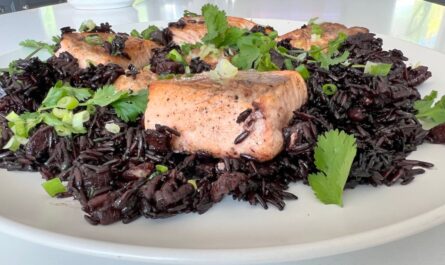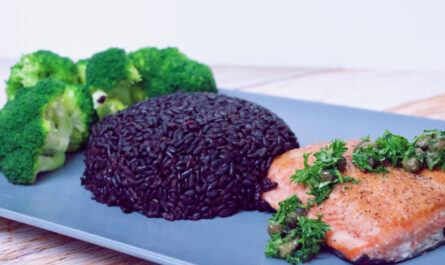Black rice, often called the ‘forbidden rice’, has a rich history, especially within Chinese medicine. Known for its deep black color that turns purple when cooked, it has been cherished for centuries for its nutritional and medicinal properties. The intrigue around this grain is not just in its color, but in its profound health benefits that make it an integral part of traditional Chinese healing practices.

The Historical Significance of Black Rice
Historically, black rice was reserved for Chinese royalty due to its rarity and health benefits. It was believed to enhance longevity and vitality, making it a prized possession. This historical context has translated into modern times, where black rice continues to be a symbol of health and wellness.
Nutritional Profile of Black Rice
Black rice is rich in antioxidants, particularly anthocyanins, which are known for their ability to fight free radicals. This article provides a deeper insight into the health benefits of black rice. Additionally, it contains a higher protein content compared to other rice varieties, which is essential for body repair and growth.
Black Rice in Traditional Chinese Medicine (TCM)
In Traditional Chinese Medicine, black rice is used to nourish the kidneys, liver, and stomach. It is believed to promote blood circulation and enhance energy levels. The principles of TCM emphasize balance, and black rice is often used to achieve this equilibrium in the body’s energy (Qi).
Role in Balancing Qi
Qi, or life energy, is a fundamental concept in TCM. Consuming black rice is thought to strengthen the body’s Qi, leading to improved health and vitality. Its ability to nourish the blood also makes it beneficial for women, especially during menstruation.
Black Rice and Its Health Benefits
Modern science supports many of the traditional claims about black rice. It is praised for its potential in reducing inflammation, supporting heart health, and improving digestive health. The high fiber content aids in digestion and helps maintain a healthy weight, which is detailed in this guide on using black rice for weight management.
Antioxidant Properties
The anthocyanins in black rice contribute to its strong antioxidant properties. These compounds are known for their ability to reduce oxidative stress, which can lead to chronic diseases. Including black rice in your diet can help mitigate these risks.
Incorporating Black Rice into Your Diet
Black rice can be a versatile addition to your meals. It can be used in sushi, as detailed in this article, or in various recipes like soups and salads. Its unique flavor and texture make it a favorite among sushi lovers.
Cooking Tips for Black Rice
Cooking black rice is similar to other rice varieties but may require a bit more water and time. It is essential to rinse it thoroughly before cooking to remove any excess starch. For a detailed recipe, you can refer to this soup recipe.
Conclusion
The use of black rice in Chinese medicine is not only rooted in tradition but is also supported by modern nutritional science. Its health benefits, coupled with its unique flavor, make it a valuable addition to any diet. Whether you are a fan of traditional Chinese medicine or simply looking to enhance your health, black rice offers a delicious and nutritious option.

FAQs
What are the benefits of black rice?
Black rice is rich in antioxidants, supports heart health, and aids in digestion. It is also beneficial for maintaining a healthy weight.
How is black rice used in Chinese medicine?
In Chinese medicine, black rice is used to nourish the kidneys, liver, and stomach, and to enhance blood circulation and energy levels.
Can black rice be used in sushi?
Yes, black rice can be used in sushi. Its unique flavor and nutritional benefits make it an excellent choice for sushi lovers. For more on this, visit this guide.
This article contains affiliate links. We may earn a commission at no extra cost to you.




